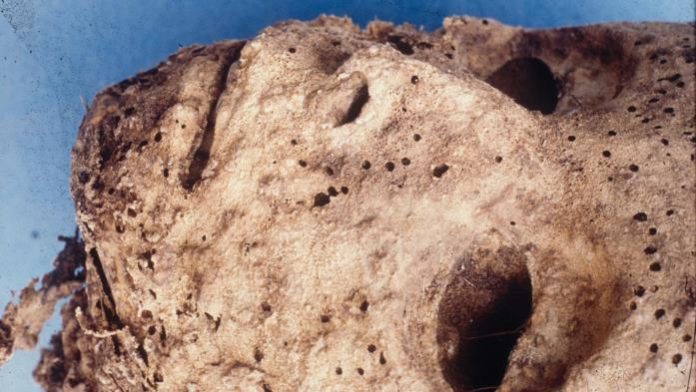The haunting face above belongs to the mummified remains of a 2-year old child from the 1500s, unearthed some 30 years ago in Naples, Italy. But rather than rising from the dead and terrorizing residents, this mummy was particularly helpful to virologists.
DNA analysis revealed that the child likely died of infection with Hepatitis B, providing researchers with important insight into the origins and evolution of this virus, which still kills almost one million people every year. The work was published last week in PLOS Pathogens.
Because of the visible rash on the mummy’s face, scientists originally pinned cause of death on the smallpox virus, but DNA analysis performed at the McMaster Ancient DNA Centre found no trace of smallpox viral DNA, instead identifying Hepatitis B virus (HBV). The really surprising bit, however, was that the DNA was very similar to modern-day strains of HBV. This was so surprising, in fact, that the team thought the virus might be a contaminant left behind from when the body was exhumed, but further analysis revealed DNA damage consistent with an ancient sample.
Many viruses evolve very rapidly – it’s one of the reasons a new flu vaccine has to be developed each year. By comparing samples of viral DNA over time, scientists can establish a rate of evolution and deduce the history of the virus, such as establishing when two different strains diverged. The results of this study imply that different strains of HBV diverged long before the 1500s, and support the idea that HBV has been infecting humans for many thousands of years.
There are 10 different known strains of HBV designated A through J, and each tends to be associated with a particular geographic region. The strain of HBV found in this mummy was the D strain, most commonly found in the Mediterranean countries including Italy. In Canada, you’re most likely to be infected with type A.
The current hypothesis is that the different HBV strains evolved within isolated human populations after humans migrated around the world, but it is still unknown when these events occurred and over what timeframe. By studying ancient viral DNA like that found in this mummy, researchers can get a better idea of the strains responsible for specific historical outbreaks and the way in which they spread.
Ultimately, the more we know about the way a particular virus works, the better we can work to control it.








































